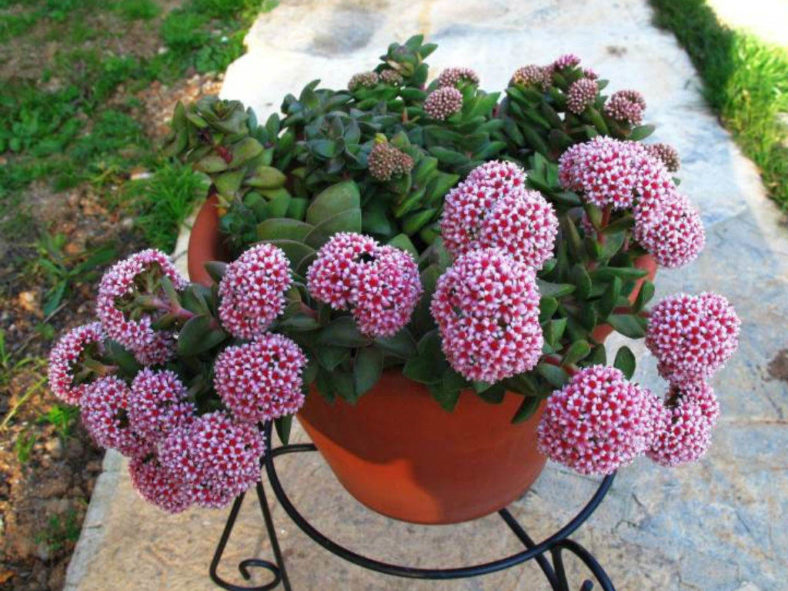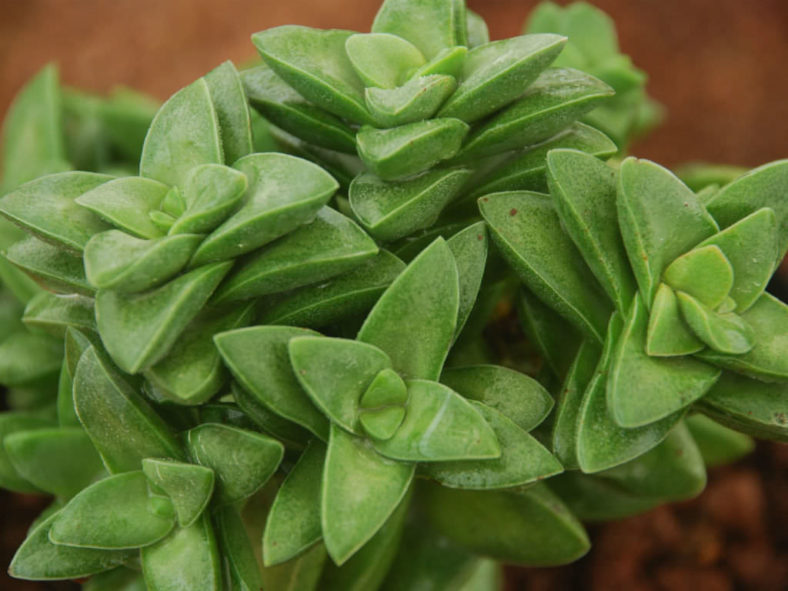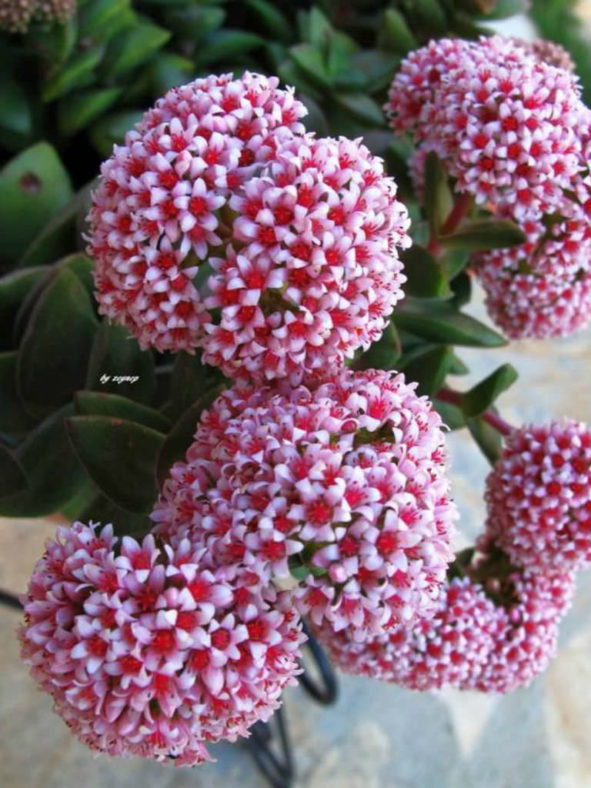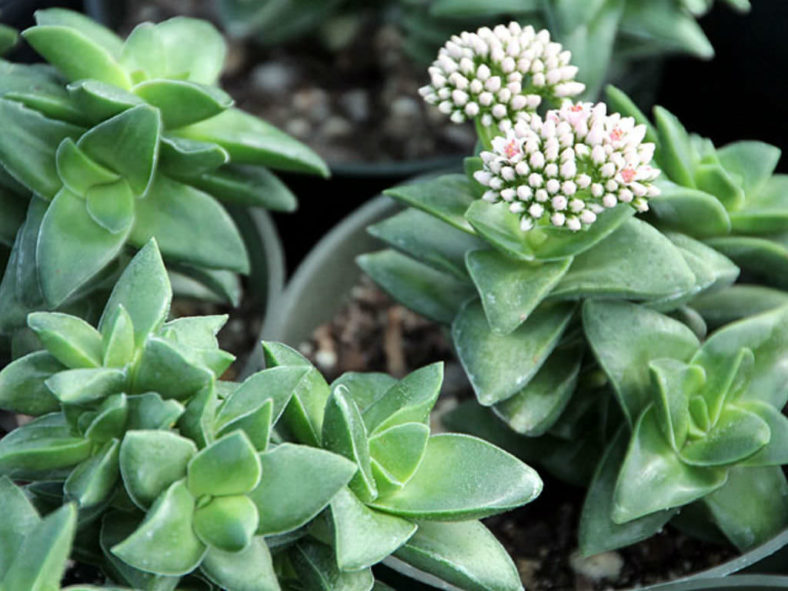Scientific Name
Crassula 'Springtime'
Common Name(s)
Springtime Crassula
Scientific Classification
Family: Crassulaceae
Subfamily: Crassuloideae
Genus: Crassula
Origin
Crassula 'Springtime' is a hybrid resulting from a cross between Crassula perfoliata var. minor and possibly Crassula rupestris. It was introduced by Hans Britsch (1933-2022) in Vista, California, United States, before 1980.
Description
Crassula 'Springtime' is a slow-growing succulent with slender stems and grey-green to dark green leaves with ciliate margins and a few scattered papillae. It can grow up to 6 inches (15 cm) tall. The stems are initially erect but arch under the weight of the leaves. The opposite leaves are thick, fleshy, elliptical, and no larger than a thumbnail.
The flowers are scented, star-shaped, pale pink with a red center, and appear in dense clusters in late winter and early spring. The flower clusters can reach a diameter of 2 inches (5 cm).
Crassula 'Springtime' is similar to Crassula 'Bride's Bouquet'. When grown under identical conditions, these two hybrids are nearly indistinguishable.

How to Grow and Care for Crassula 'Springtime'
Hardiness: USDA hardiness zones 9a to 11b: from 20°F (-6.7°C) to 50°F (10°C).
Crassulas are easy to grow but susceptible to mealybugs and fungal diseases. As with all succulents, overwatering is fatal, so err on the side of being too dry rather than too wet. Never let your plant sit in water. If you water from beneath by allowing the plant to sit in a saucer, pour off any excess water after a few minutes.
These succulents are generally started by division, offsets, or leaf cuttings. Crassulas can be easily propagated from a single leaf. Sprout leaves by placing them into a potting mix for succulents, then covering the dish until they sprout.
Repot as needed, preferably during the warm season. To repot your Crassula, ensure the soil is dry before repotting, then gently remove the pot. Knock away the old soil from the roots, removing any rotted or dead roots. Treat any cuts with a fungicide. Place the plant in its new pot and backfill it with potting soil, spreading the roots as you repot. Leave the plant dry for a week or so, then water lightly to reduce the risk of root rot.
Learn more at How to Grow and Care for Crassula.
Links
- Back to genus Crassula
- Succupedia: Browse succulents by Scientific Name, Common Name, Genus, Family, USDA Hardiness Zone, Origin, or cacti by Genus
Photo Gallery
Click on a photo to see a larger version.


